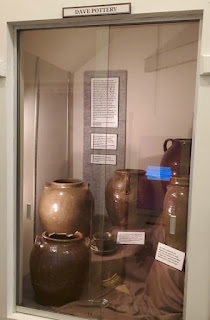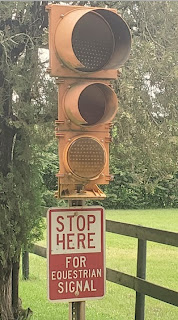Western Pennsylvania’s Clearfield County is as close to a recreational paradise, replete with natural wonders, numerous outdoor activities, unique tasting trails and culinary delights, as any traveler can imagine. All season recreational offerings make any time opportune for a trip to the county’s wild side. More than 100,000-acres of State Forest and Game Lands allow sport hunting and game viewing. Those who prefer water-based experiences can choose from more than 250 lakes and rivers in which to fish, swim, boat or canoe. www.visitclearfieldcounty
Parker Dam State Park is your entrée into outdoor adventure. From here visitor’s can hike into the 50,000-acre Quehanna Wilderness, engage in a variety of activities and explore the history of the Civilian Conservation Corps (CCC) and the lumber heritage in the museum. The 20-acre Parker Lake and new growth forestation were products of the CCC. In 1985 a tornado left a path of destruction 69-miles long and up to a mile wide and a portion of the destroyed area has been left untouched so that visitors can compare it to new growth along the Hardwood Trail.
Nearby Elk Country Visitor Center is designed to recreate the ambiance of a rustic retreat. Through text, dioramas and displays visitors are introduced to the elk’s habitat and habits. Pennsylvania’s elk population was wiped out by the 1850s. They were reintroduced in 1913. Currently PA has the largest herd in the northeast, numbering over 1,400. Elk viewing is one of the counties more unique activities. Viewing wagon tours can be taken from the visitor center.
The Iroquois Confederacy inhabited the region prior to the entry of the first European in 1785. The first settlers tended to be veterans of the Revolutionary War and the number of African Americans was negligible. One documented freed slave, Elijah Only, married one of the only other blacks in the region, served in the Civil War and died there in 1912. In 1804 Clearfield County was created from portions of existing counties and people migrated there to work in the timber industry.
Bilger’s Rocks are situated on 262-acres of land. They were formed of sandstone more than 300-million years ago during the Paleozoic Era. Passages weave through the landmark with walls as high as 25-feet. Native Americans sheltered among these rocks and called it Otsinachsin, “The Place By the Rocks”. There are ten special viewpoints, three marked and four unmarked trails. One of these, the Roland Welker Trail, was built to replicate his experience and the shelter he utilized during his winning 7th Season on ALONE on the History Channel. The one-mile loop starts and finishes at the Rock House.
April 1861 and the onset of the Civil War altered life for the entire country and deeply divided Clearfield County in particular. It became an active center for draft dodgers, deserters, copperheads and secret societies assisting draft resisters and apprehending slaves. Lincoln ordered four drafts and in August of 1864 only one-third of Clearfield’s quota reported. A recruitment officer was killed in October, buildings were burned and the government sent troops to quell the civil unrest.
On December 13, 1864 Adam’s log house was the scene of a violent confrontation known as the Bloody Knox Affair. The cabin was surrounded and the troops called for the deserters to come out. A Union soldier was killed as was the deserter Adams. Eighteen men were arrested on the spot and 150 were incarcerated later. The on-site reconstructed cabin is furnished and tours are available.
Clearfield County Historical Society Museum provides an overview of the county’s history in the 1881 Victorian Kerr Mansion. The museum has 12 display rooms, coal and lumbering dioramas in the basement and the porch and carriage house. Of particular note are the Medical Room and the Mourning Room showcasing Victorian era funeral traditions.
Grice Clearfield Community Museum is a private collection of more than 75 antique classic cars and greater than 800 trophy game mounts. This oldest car on display is from 1910 and the collection includes everyone’s dream car. Photos are encouraged.
Doolittle’s Station features another outstanding private collection, largely railroad themed, that begins with an 1880 replicated B&O Rail Depot. Visitors have a menu of sites, activities and dining options including Box Car Brew, a nano-brewery with 20 rotating taps. If all this activity tires you there is a B&B on the premises.
The interactive self-guided dinosaur tour is a favorite. The gallery is filled with animatronic beasts that move and in some cases are available for rides and photos. Highlights of a rail car tour include a car from the circus train, a 1906 Pullman Palace Car that is said to be the best preserved in the country and Teddy Roosevelt’s 1901 presidential rail car complete with original furnishings.
There are two Lumber Jack trails created to highlight singular eateries, wineries and breweries and honor the area’s first major industry. In 1805 the first logs were rafted down the Susquehanna River. Between 1840 and 1890 12-billion board feet of timber were produced. The Lumber Jack Burger Trail lists 13 locations and the Lumber Jack Tasting Trail lists 16. There are passports and prizes for each trail.
Denny’s Beer Barrel & Pub issues the “World’s Largest Burger Challenges” in the form of five different burger-eating dares based on consuming 15 or 20-lb burgers. Denny’s has been featured on several television programs.
Wolf Run Adventures will rent you a Slingshot so you can look like an adventurer while driving the roads of Clearfield County. There are a series of four designated driving routes from which to choose that vary in length from 20 to 60-miles. Additionally there is the 72-mile West Branch Susquehanna River scenic trail, a former Native American route filled with exceptional natural beauty.
www.wolfrunadventures.com
Photo: Mike Wintermantel (Bloody Knox Marker & House)
Photo: Wolf Run Adventures (Car)


























































